The dachshund is one of the most popular dog breeds for its dinky size and bigger than life personality! If you want a small dog, this is an excellent breed to consider! Still, you might find yourself stuck when it comes to deciding whether to go for a standard vs. miniature dachshund.
This article will answer all the questions you might have regarding the differences between these two varieties.
To be specific, we will discuss the following topics:
- Standard Vs. Miniature Dachshund: Origins & Purpose
- Standard Vs. Miniature Dachshund: Size & Weight
- Standard Vs. Miniature Dachshund: Coats & Colours
- Which Type of Dachshund is More Popular?
- Price of Standard Vs. Miniature Dachshund
- Standard Vs. Miniature Dachshund: Health
- Are There Differences In Activity Levels in Standard Vs. Miniature Dachshunds?
- Standard Vs. Miniature Dachshund: Trainability

Let’s get started!
Standard Vs. Miniature Dachshund: Origins & Purpose
Dachshunds look the way they do for a good reason, and that reason isn’t just because they make cute and adorable pets.
The barrel-shaped body, short legs, and long nose serve particular functions, designed by breeders so that the dachshund can carry out the tasks it was initially bred for.
The two different sizes of the breed – the standard vs. miniature dachshunds – were bred intentionally. Let’s take a look at why.
The standard dachshund was originally bred to flush badgers and other burrow-dwelling pests out from underneath the ground.
The name of the breed actually translates to a “badger hound.”
Both the standard and miniature sizes of dachshund have legs that are short and stubby, and bodies that are long and tubular. As a result, they can quickly move unhindered through the networks of underground tunnels.
The breed’s muzzle is long with sharp teeth located at the very front of the mouth, and an extra-strong jaw for a vice-like grip and protection for the more vulnerable fleshy body.
These features are all designed to allow a standard dachshund to grip onto a badger head-on while underground, and then drag it backward out of the den.
The Miniature Dachshund was designed with very much the same purpose.
Miniature dachshund’s smaller size was intended for it to tackle smaller prey such as rabbits, rats, and other rodent-like animals.
Standard Vs. Miniature Dachshund: Size & Weight
Many people who are interested in getting a dachshund are looking for a small breed of dog. Dachshunds are great for cities and apartments because they are easy to pick up and take into shops or on public transport.
City parks are perfect for providing them with the exercise they need. Their small size is also ideal for people in small single-level homes.
If you want a small dog that is easy to walk and handle, then the size and weight of standard vs. miniature dachshund dogs will be an essential consideration for you.
The standard dachshund weighs between 16 and 32 pounds.
Miniature dachshunds typically weigh less than 11 pounds, which is considerably smaller.
If you are looking at a litter of dachshund puppies and the adult size is crucial to you, then you should make sure to be able to view the parents of your puppy before buying to give you a better idea of how big your dachshund puppy could grow.
You can expect a standard dachshund to stand taller at 8 to 9 inches, and a miniature dachshund to reach just 5 to 7 inches in height.
Pups don’t reach their adult size and weight until at least 12 months of age, so it can be tricky to guess how big they are going to get without looking at the parents, and sometimes the grandparents.
It is important to mention that it also exists the third size, – toy, teacup or kaninchen (rabbit) dachshund, – which is essentially a smaller version of a miniature dachshund. You can read about the toy or rabbit dachshund in our separate article.
According to the United Canine Association, the miniature Dachshund is 8-11 lbs (3.6-5 kg), and the toy is under 8 lbs (3.6 kg).
Standard Vs. Miniature Dachshund: Coats & Colours
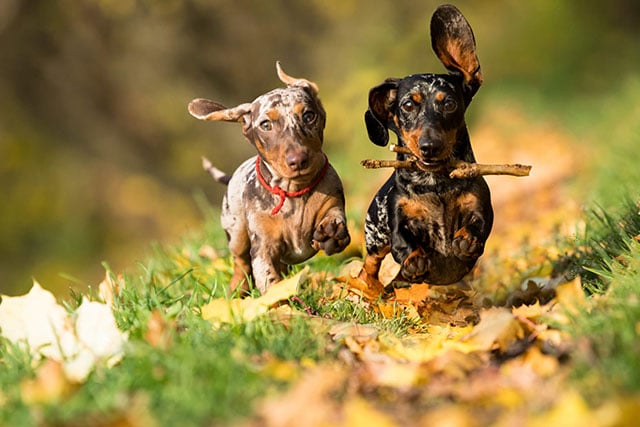
One of the wonderful features of both standard and miniature dachshunds is that they come in a beautiful variety of colours, and different types of coat. Keep reading to discover all of the different coat textures and colour varieties.
Dachshund Coat Varieties:
Smooth Dachshund – The smooth-coated doxie is arguably the most popular. The rich, glossy coat has a velvety appearance and is a pleasure to touch and stroke.
Wire-haired Dachshund – The short thick coat of the wire-haired variety of this dog breed is pleasingly rough to touch. It is a hard coat that is exceptionally weatherproof.
Wire-haired weenies are adored for their expressive facial features, provided by a scruffy beard and thick bushy eyebrows, which make them look like little old men.
Longhaired Dachshund – The beautiful coat of the longhaired variety is sleek, but slightly wavy and flowing. The fur is longer on the ears giving the appearance of the dog having hair.
The fur is also longer under the neck and body, on the chest, and behind the legs. The long coat makes this variety of dachshund a pleasure to groom and keep in lovely condition.
Dachshund Colours & Patterns:
Base Colours – The base colours that are available in the dachshund breed are; red, black & tan, cream, black and cream, wild boar, chocolate & tan, chocolate & cream, fawn & tan, blue & tan, and blue & cream.
Patterns – The patterns you can find in both standard and miniature dachshunds include:
- brindle,
- dapple,
- sable,
- double dapple (as a result of unscrupulous/ accidental breeding),
- and piebald.
Which type of dachshund is more popular?
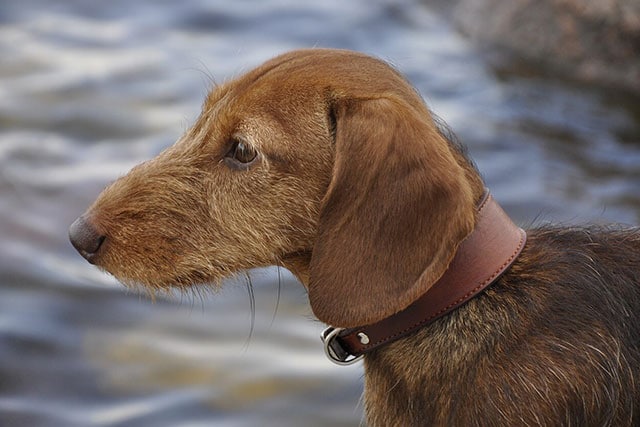
Dachshund fans love to unite online to celebrate their favourite dog breed by using Instagram hashtags and Facebook groups to connect and share the appreciation for their favourite pets.
Dachshund owners also love to plan local meet-ups so that they can walk their dachshunds with other dogs of the same breed, and enjoy watching them play together.
You don’t have to own a particular variety of dachshund to participate in this supportive community of dog lovers.
If you are still interested to know which type of dachshund is more popular, the answer is – the short-haired ones.
The smooth-haired variety tends to be the most popular among dachshund lovers. The short-haired weiners are more commonly seen or thought of when the dog breed is mentioned.
However, what about standard vs. miniature dachshund popularity?
Miniature dachshunds are increasingly more popular due to the demand for tiny designer-dogs.
There are niche communities that appreciate one variety over the others, but fundamentally they are all just as good.
If you have difficulty deciding which variety you would like to go for, then you can consider your personality to establish which type would most suit you.
For example, if you love cute, tiny handbag dogs, then you would probably adore a smooth-haired miniature dachshund.
However, in case you are a bit rough around the edges and fancy a scruffy gruff kind of guy, then a standard wire-haired dachshund could be a perfect dog for you.
If your style is more classic, and you want a dog that will look beautiful when groomed, then why not consider a longhaired dachshund that will make your friends swoon?

Price of Standard Vs. Miniature Dachshund
When it comes to differences in price of the standard vs. miniature dachshund, miniature dachshunds do tend to come up more expensive than the standard size variety.
It is because they are more in trend and sought after at the moment in comparison to the standard size.
The higher price is also since miniature dachshund litter sizes tend to be smaller because they are smaller sized dogs.
After all, breeders are in the business for profit or at least aim to cover all of their expenses. Consequently, they will want to increase the price point to make up for the fact that there are fewer puppies in the litter to sell.
The price of dachshund puppies can also depend on several other factors, such as the pup’s family history, whether the dog has been registered, vaccinated, etc.
One of the essential elements is how reputable the breeder is. If, for example, the breeder has a waiting list of potential buyers, then you can expect prices to be high for either standard or miniature dachshund puppies.
Standard Vs. Miniature Dachshund: Health
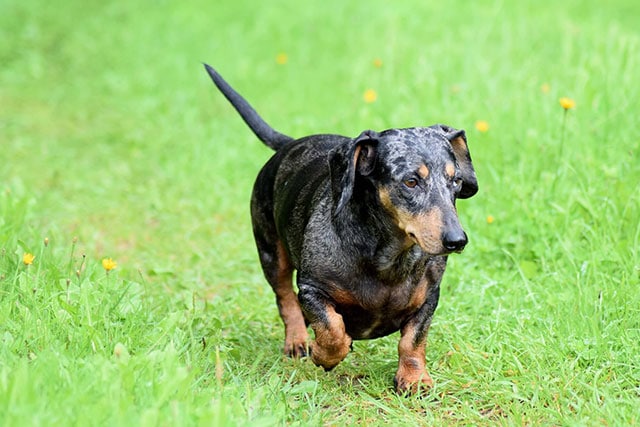
Health is an important consideration when researching dog breeds. Unfortunately, many pedigree dog breeds have developed health issues due to the elimination of natural selection.
It is no longer about the survival of the fittest. For our pet dogs, it is now about the survival of the dogs that conform aesthetically to the visual breed standards that humans have decided for them. And this is no different for our beloved teckels.
You will be pleased to know that healthy dachshunds, both standard and miniature varieties, can enjoy a long lifespan of 12 to 16 years.
It is, of course, dependent on a healthy diet, a good exercise routine, and a loving family who cares for them well.
But what about the genetic health conditions of the standard vs. miniature dachshund? Sadly, both varieties are suffering from a few hereditary issues.
Namely, it is the one thing we love most about Dachshunds that proves to be the most significant health threat for them – and this is their body conformation.
We simply adore their long, lean, tubular bodies, and their oh-so-cute short and stubby legs. But those tiny legs are designed to look cute, not to support such a long spine.
When the dachshund was initially designed, the shape, we know and love so well, looked very different.
But now breeders have bred doxon dogs to exaggerate their iconic features. This body structure has lead to severe repercussions for the breed’s health.
Let’s look at some of the leading health issues that dachshund dogs face, and find out if there are any differences between the standard and miniature dachshund varieties.
The best way to help your dachshund live longer?
Watch our video to find out!
Intervertebral disc disease (IVDD)
Intervertebral disc disease in dachshunds causes pain, nerve damage, and even paralysis. It occurs when the material inside a disc protrudes into the spinal column. Studies have shown that the standard smooth dachshund in 2015 was over three times more vulnerable to the disease than the standard wire-haired variety.
Eye Diseases
Dachshunds can inherit eye problems such as dry eye syndrome, cataracts, and glaucoma. Progressive Retinal Atrophy (PRA) is a degenerative eye disease, which can lead to blindness.
Studies have shown that the early onset of visual impairment can affect both the wire-haired standard dachshund and the longhaired miniature dachshund.
If you want to find out more, read our detailed article “Dachshunds eye problems.”
Lafora Disease
Lafora disease is a form of late-onset, progressive epilepsy. It is caused by a gene mutation and is fatal, leading to seizures, dementia, and even paralysis.
The miniature wire-haired dachshund have a particularly high prevalence of this inherited disease.
Acanthosis Nigricans
Acanthosis Nigricans is the health condition that affects the dog’s skin, making it thicker and darker in colour. Sadly, this condition is most common in the dachshund breed, especially in short-haired dachshunds.
The clinical signs of Acanthosis Nigricans include bold patches and rougher areas of the skin, visible light brown to black skin areas. Legs and groin are usually the most often affected areas.
Are There Differences In Activity Levels in Standard Vs. Miniature Dachshunds?
The difference in size and weight may lead you to wonder if there are differences in the activity levels of standard vs. miniature dachshunds.
The small size and tiny legs often lead dog owners to mistakenly think that dachshunds are lapdogs and don’t need as much exercise.
However, both standard and miniature varieties require a considerable amount of physical activity.
Standard dachshund can cope with longer walks than the miniature one.
Activity requirements for the standard vs. miniature dachshund dachshund are the following:
- Standard dachshund: up to 30-45 min walk twice a day (3-5 km a day)
- Miniature dachshund: up to 30-45 min walk twice a day (2-3 km a day)
The issue with miniature doxie, though, is that their short legs mean they can’t walk as fast as the standard ones.
When a stubborn mini dachshund decides it doesn’t want to walk anymore, it is all too easy to pick them up and carry on.
The lack of exercise is the reason we see so many overweight small dachshunds, especially miniature ones.
It is a misconception that dachshunds are fragile, although care should be taken to protect the breed’s back, spine, and hips during exercise.
It means limiting the dog’s jumping habits, especially preventing them from jumping off high sofas and chairs or running up and down the stairs.
Despite these considerations, your dachshund still needs plenty of regular exercises. Just because we nickname these cute dogs “sausage dogs” doesn’t mean they should all look like fat and juicy sausages. Look after your dog’s weight, and your weiner will live longer and will be healthier.
Dachshunds are tenacious and athletic hunters, therefore they need plenty of exercise to stay happy and healthy. There are many dog sports that the doxon dogs would love to get involved with, such as agility, field trials, swimming, and hiking.
You should exercise your dachshund well regardless of whether they are of the standard or miniature variety.
Standard Vs. Miniature Dachshund: Trainability
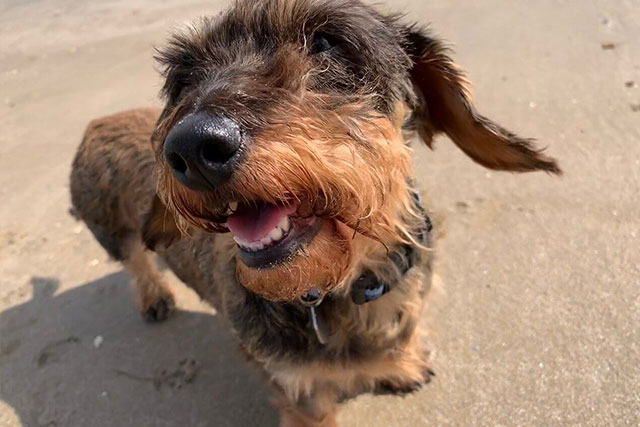
Both the standard dachshund and the miniature dachshund are very intelligent dogs, but this doesn’t necessarily make them easy to train. They are also independent and stubborn. They like to do things their way a lot of the time.
Dachshunds can also be sensitive, and they won’t respond to harsh training techniques.
Positive reward-based training techniques will help you immensely when it comes to getting your weenie to see things your way.
If you start your training early, then you will have an easier time with it.
Additionally, dachshunds are notoriously difficult to potty train when puppies. It is because when they are so little that they have tiny bladders.
Crate training can help with the process, as well as taking your dachshund puppy to relieve themselves after every meal, play, training, and sleep session.
Standard Vs. Miniature Dachshund: Final Words
There are many factors to consider when deciding on whether to go for a standard vs. miniature dachshund. Hopefully, this article has covered some of the things you need to think about, and now you have a better idea about which variety is more suitable for you and your lifestyle.
Both the standard dachshund and the miniature dachshund make lovely pet dogs. You have plenty to choose from in terms of size and colour combinations.
Also, now you know why dachshunds look the way they do, and how this can affect their health. We now also have some insight into what to expect when it comes to the price of your new dachshund puppy and knowledge regarding activity levels and trainability.
All you have to do is decide what coat and colour you would like!
Good luck! Tell us what varieties you are thinking of going for in the comments below.


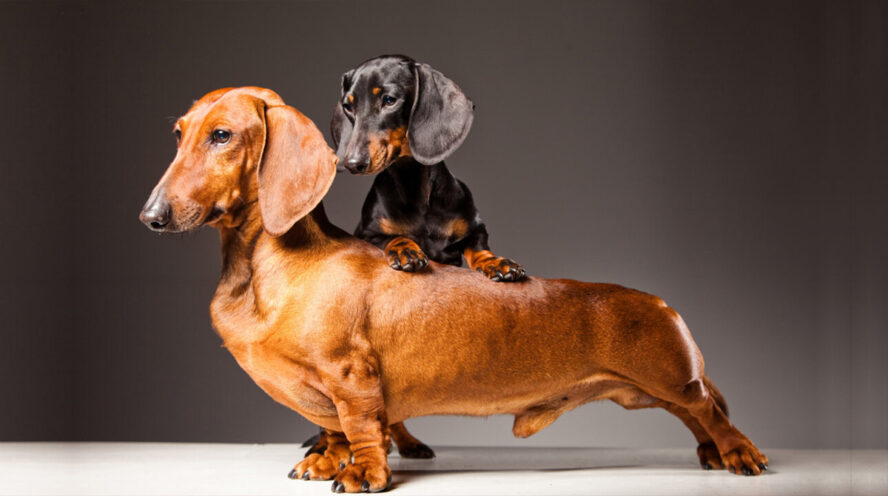
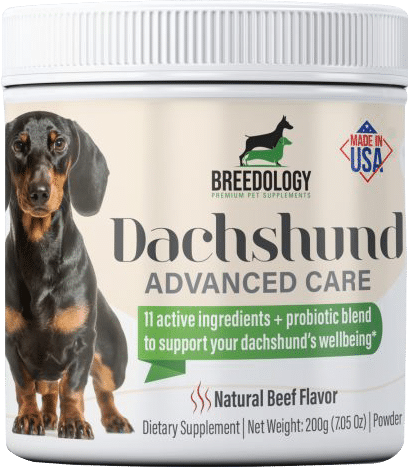
Comments
I had had large breed dogs my entire life. Dobermans weimaraners ,labs .
My last lab passed at 14. We decided to get a Giant Schnauzer. In 2003. And fell totally in love with the breed. Needing a large agressive protection dog. Living on a farm. With many seasonal crop workers. We had 5 giants. By the time I rescued a tiny dog running down the middle of our rural highway. It came into my car so friendly. Like Hi where we going? Wss completely obdient,housebroken and got along famously with my 5. A young tan shorthaired mini smooth haired male.
For 4 days it was like overnight camp. He slept in my room crated happily. And followed me all over. What a love. Enjoyed my 110 acres immensely. The owners finally found. I decided i wanted one some day. That was in the fall of 2006 by 20014 my beloved work female giant was gone at only9 in a horrendous death.
In February . On mothers day we went to largest Daschound show on the West Coast. Looked at all the types. Falling in love with tbe beautiful sweet noodle lap longhaired mini vatiety. We held nearly every color. For the owners whilst showing other dogs. Each more sweeter. Wemet and spoke with many helpful owners.
I fell inlove with a gorgeous Russian lineage silver dapple girl. Her whole family at the show. Except her brother at home
She was to be new breeding stock. He the owner handler decided would just hate being shown and ruin his marvelous personality. I asked he he’d be available. She said possibly. I waited a week for them to get back to Colorado. It was forever to me. And was rewarded. He was available! Wethen they did not want him in a home full of agressive guard dogs.
It took a lot of explaining many photos letters and phone calls. I won the over hebecame mine at the age of 6 months. Flew to California with a friend of theirs inside the cockpit. Loved the journey. He name was TJ’s Wnters Frost. Born in a December snowstorm. Called Frosty.Arrived onmy exact birthday in May. Id not had a gift in 4 yrs due to illness. Missed my girl terribly. Was going tbru a sad time. It seemed Cosmic. He came right to me. Hasn’t left my side in 8 years. His name is Cosmo. He adores traveling. Is very obdient and good natured. Never destructive or snarky. A bit hard to housebreak.
I loved him so much 5 years later I got another mini longhaired male. He is black and tan. A total love Loius his name. Children are his favorite. And ehem barking. They do like to bark. Protect and hunt. Soon another shall join the family. My original 5 giants have all passed away. One 3 yr old Male remains. A handful. My husband’s boy
The daschounds with me 24/7.
Yes I am getting a Russian lineage longhaired male. Most likely a dapple. Red. Chocolate or sable. Just waiting for the right puppy at the time.
All colors are gorgeous. I do not want a cream. Jst bc i prefer darker dogs
There is NO such thing as a double dapple. They are often sick. Deformed,deaf,or terrible genetic issues as they age. Please never want one or consider one or even get a daschound from a person who breeds them. Saying their other colored litters are sound. It is horrible. Not acceptable in the legitimate Daschound breeding world. I felt a warning should be told
Due to the article stating double dapples. Its just not true and very heartbreaking to get an ill puppy or one whomay not develop correctly or have serious issues later in life.
Enjoy your daschound tbey are the most delightful stubborn interesting intelligent loving dog I have e er had in a small package.
Daschound convert,
Kelly B
Hi Kelly, thank you for sharing your story! My longhaired red dachshund Gudzon was also from a Russian lineage. You are absolutely right, breeding two dapple dachshunds is not an acceptable practice. Due to the fashion for fancy colours, single dapples are now very popular. Sadly, the breeders don’t check the presence of merle gene in solid dachshunds, which can be still present (hidden), for example in red dachshunds. As a result, they might have double dapples in the litter, which are also sometimes confused for piebalds. It is always advised to buy a puppy from an ethical, responsible dog breeder.
Would you recommend a miniature dachshund puppy for a first time dog owner who lives in a dog friendly apartment complex? If not, at what age do you suggest adopting one, i.e., three years old, etc? Also, could you recommend reputable places to adopt a mini dachshund puppy and/or adult in the Maryland, Virginia, DC area? I have been looking at this dog for years and I think they are adorable. Any help is appreciated. Thank you!
Hi Erin, absolutely, miniatures are easy to look after, and can be carried around if needed. It is always a good deed to adopt one, please see our list of adoption centres https://www.sausagedogworld.com/dachshund-rescues/
I was given the smallest doxie I have ever seen she hasn’t grown much she weighs only 3 lbs at the moment she will be 3 months old on the 28th I have had dachshunds all my life I have never seen on this small would you say she is a mini or a tea cup???she’s as healthy as can be her teeth are like needles and she’s full vinigar I have 2 other dachshunds and they tower over her she comedy to watch her play with them.
I have short-haired black female. She should have been standard but she weighs only 6kg,so she is in between mini and standard which is ideal for me 🙂
She is very smart and stubborn, but she is a good well trained dog. We got her when she was 2 and a half months old and she peed on the floor only few times. It was like she was already trained lol. I had dogs before her and I have to say, I think that dachshund is the best breed. But, they do need someone who knows how to handle dogs,otherwise you can end up with a nervous, aggressive and destructive barking little dog
Be SURE to do your research on whoever you decide on to get your new baby….there are WAAY too many scammers out there who only want to make money from these precious babies!
When I was a child, my Aunt Millie had a Dachshund named Heinie. That dog LOVED beer. If you set your beer bottle on the floor, he would walk up, tip the bottle over, put his tongue into the bottle, while holding the neck with his paw.
Her parakeet, Peepers, could talk, and sounded just like Aunt Millie. He would sit in the cage and call for Heinie. Heinie would go frantic trying to find my aunt. He was a great dog, and so funny.
I have always had standard Daschunds both smooth and long haired
They are beautiful dogs never had any trouble handling both breeds
I am older now and wish to maybe have a miniature long haired Daschund
Is it easy to train the miniature too go on a pee pad
Will this be a problem as they love to go out doors
It would be able to go outdoors during the day but prefer it do it’s business on a pee pad
Please help me make up my mind about these special dogs
Kathleen Mariani
Hi Kathleen, the dachshund breed is not the easiest one to potty train with potty pads. However, it is possible with persistence and the right technique. It goes without saying that your doxie should go outdoor at least once a day – it is a hunting breed and thrives on walks outdoors.
8o
We kept our babies in a crate next to our bed until they were trained to let us know when they needed to go outside…I would get up and take them out whenever they got restless…. they will RARELY PEE OR POOP where they sleep… PATIENCE is the name of the game! And it will NOT happen overnight!
I live in New Jersey. I have had miniatures in the past and thoroughly enjoyed them, I have however, always been attracted to the standards although I’ve had next to no exposure to them. I think I would very much like to experience one at some point , but it’s almost impossible to find a breeder within the tri-state area where I can see some adults and hopefully some puppies. I have been doing Google searches, but perhaps you can give some advice on how to more easily find them in NJ, NY or Pennsylvania. Connecticut would also be a readily accessible place to where I am. Any advice would be appreciated. Thanks!